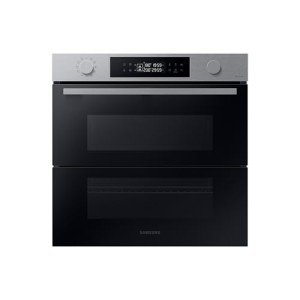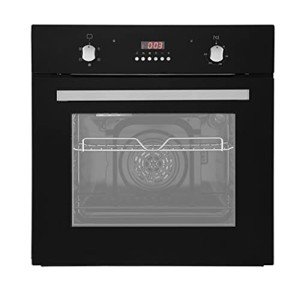You'll Never Be Able To Figure Out This Built In Oven's Tricks
페이지 정보
본문
The Comprehensive Guide to Built-In Ovens
Intro
Built-in ovens are a staple in contemporary kitchens, combining elegance with functionality. They use a sleek visual and efficient cooking abilities, making them a preferred option for homeowners and culinary enthusiasts alike. This article delves into the advantages of built-in ovens, their numerous types, crucial features to think about, setup ideas, and upkeep suggestions, along with frequently asked concerns.

Benefits of Built-In Ovens
Built-in ovens included a selection of advantages that contribute to their appeal. Here are some key advantages:
- Space-Saving Design: Built-in ovens are developed to fit effortlessly into cabinets, permitting a more orderly and space-efficient kitchen design.
- Aesthetic Appeal: They offer a smooth and modern look that can boost the overall design of the kitchen.
- Improved Functionality: Built-in ovens frequently come with innovative features and technologies that support different cooking approaches.
- Enhanced Cooking Experience: Many built-in models include self-cleaning functions, temperature level probes, and programmable settings, improving the cooking experience.
- Increased Property Value: A properly designed kitchen with built-in appliances can enhance the worth of a home.
Kinds Of Built-In Ovens
Built-in ovens been available in numerous types, each created to meet different cooking preferences and needs. Here are the main types:
| Type of Built-In Oven | Description |
|---|---|
| Single Oven | A single, standalone oven for traditional baking and roasting. |
| Double Oven | Combines two ovens in one system, permitting for numerous dishes to cook at various temperature levels. |
| Wall Oven | Set up in the wall, maximizing counter space, suitable for little cooking areas. |
| Convection Oven | Utilizes fans to flow hot air for even cooking, boosting the results of baked goods. |
| Steam Oven | Uses steam for much healthier cooking alternatives, preserving nutrients in food. |
Key Features to Consider
When picking a built-in oven, a number of functions can impact efficiency and functionality. Here are some important features to remember:
Cooking Modes
- Bake: Traditional baking with bottom heat.
- Broil: Top heat cooking appropriate for browning and crisping.
- Convection: Circulates hot air for even cooking.
- Steam: Uses steam for much healthier cooking choices.
Size and Capacity
- Standard sizes usually range from 24 to 30 inches wide.
- Consider the internal capability-- it can range from 3 to 6 cubic feet, enabling different dish sizes.
Controls and Smart Features
- Touchscreen Controls: Easy programming and adjustments.
- Smart Technology: Connectivity features enable remote tracking and control via smart device applications.
Energy Efficiency
- Try to find designs with ENERGY STAR ratings, suggesting lower energy usage.
Security Features
- Functions like vehicle shut-off and kid locks improve safety during operation.
Setup Tips
Setting up a built-in oven may need professional support, however here are some general suggestions to bear in mind:

- Choose the Right Location: Ensure there's sufficient space in your cabinets for installation, keeping in mind ventilation requirements.
- Electrical Requirements: Check that your kitchen's circuitry satisfies the oven's power requirements, specifically for electric designs.
- Level the Oven: Ensure the oven is level to promote even cooking.
- Protect the Oven: Attach it strongly to the kitchen cabinetry to avoid movement throughout use.
Maintenance Advice
Routine upkeep is crucial for the longevity and performance of a built-in oven. Here's how to keep it in leading shape:
- Regular Cleaning: Wipe down surfaces after each use and carry out deep cleaning regularly.
- Inspect Seals: Inspect door seals for built in Oven wear and ensure they keep an airtight fit to enhance energy effectiveness.
- Calibrate Temperature: If food regularly comes out overcooked or undercooked, consider recalibrating the oven's temperature settings.
- Professional Servicing: Schedule yearly check-ups with an experienced service technician to maintain optimum efficiency.
Frequently asked questions
What is the distinction between a built-in oven and a freestanding oven?
built in oven (https://posteezy.com/)-in ovens are designed to be installed within cabinets, offering a seamless look. In contrast, freestanding ovens are standalone units that typically feature their own cooktop.
Are built-in ovens more pricey than freestanding models?
Normally, built-in ovens can be more expensive due to the included installation costs and advanced features. However, rates differ extensively based upon brand, size, and performances.
Can I set up a built-in oven myself?
While it is possible to install a built-build in oven oven yourself, it is recommended to work with a professional to ensure appropriate setup, particularly if adjustments to cabinets or electrical work are required.
How often should I clean my built-in oven?
It is advisable to clean your built-in oven regularly after heavy usage. For much deeper cleanings, make use of the self-cleaning function if offered or built in oven regularly carry out manual cleansing to prevent accumulation.
Built-in ovens are a valuable addition to any kitchen, using both aesthetic appeal and advanced cooking capabilities. By understanding their types, functions, setup, and maintenance requirements, property owners can make educated options that improve their cooking experience and improve the overall worth of their homes. As kitchen designs continue to evolve, built-in ovens will likely stay a prominent choice for contemporary homes.